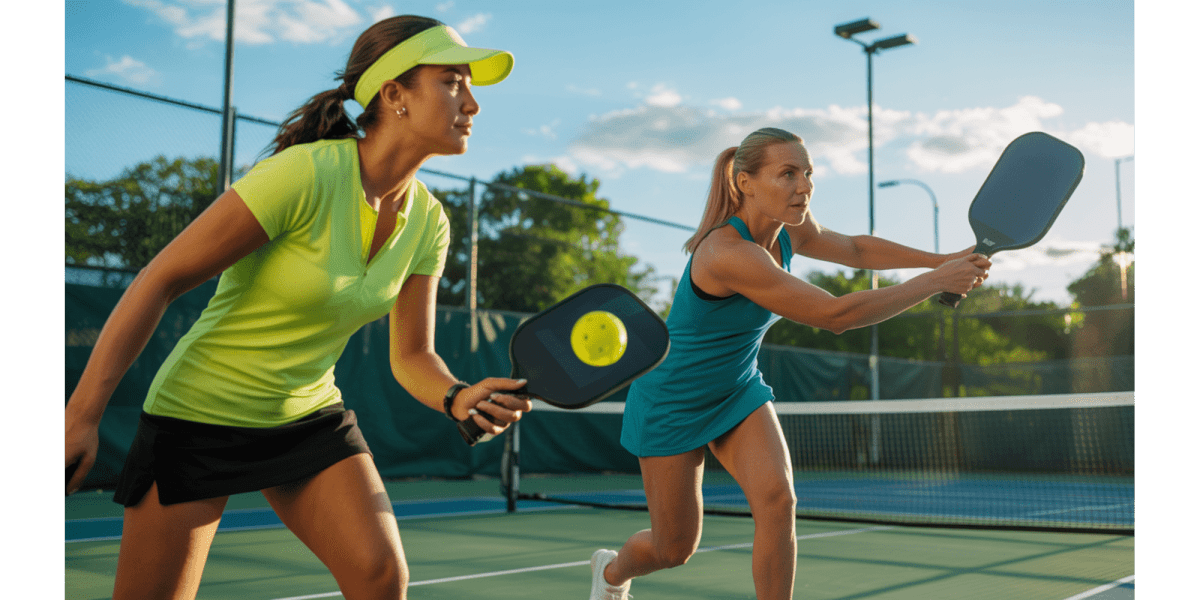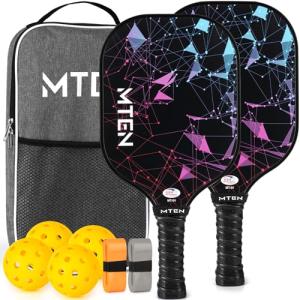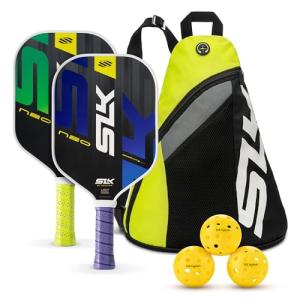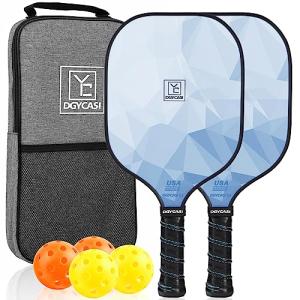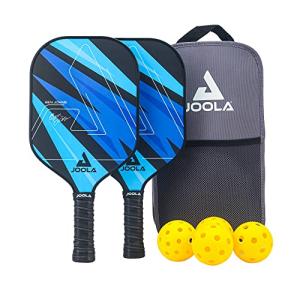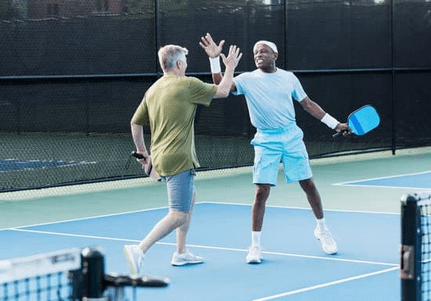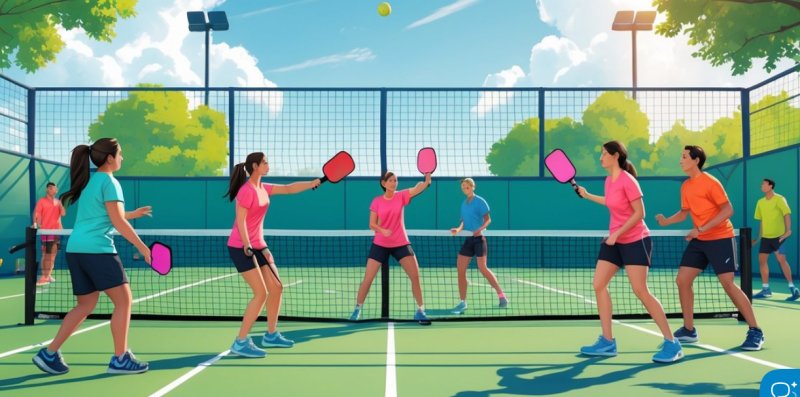Pickleball is a fast-growing sport that combines elements of tennis, badminton, and table tennis. To fully enjoy it, knowing its basic rules is key. The Two-Bounce Rule is a major rule that affects the game.
Learning the basics of pickleball, such as the Two-Bounce Rule, makes playing more enjoyable. It states that the ball must bounce twice before the opposing team hits it. This rule makes the game both fun and strategic.
Knowing pickleball game rules is important for all players. Whether you're new to the game or experienced, understanding these rules helps you improve.

Key Takeaways
- Understanding the Two-Bounce Rule is essential for playing pickleball effectively.
- The rule enhances gameplay by promoting strategy and fun.
- Mastering the basics of pickleball improves the overall playing experience.
- Knowing pickleball rules is essential for players of all levels.
- The Two-Bounce Rule is a fundamental aspect of pickleball.
Getting Started with Pickleball Fundamentals
Pickleball is easy to play but has key elements to understand. Knowing the basics, like the two-bounce rule, is important.
A Quick Look at Pickleball's Origins
Pickleball started in the 1960s on Bainbridge Island, Washington. It was created by combining elements of badminton, tennis, and ping-pong. Knowing where it came from helps us see how it grew.
Essential Rules for Beginners
Beginners need to learn the basic rules. The game is played on a court with a low net. Players use paddles to hit a plastic ball.
A key rule is that serves must be underhand. The paddle must be below the waist. The goal is to hit the ball so your opponent can't return it.
Equipment and Court Basics
You'll need pickleball paddles, plastic balls with holes, and a net. Courts are 20 feet by 44 feet, split by a net. Knowing the court and equipment helps play smoothly.
| Equipment | Description |
|---|---|
| Pickleball Paddle | Made of lightweight materials, they are used to hit the ball. |
| Plastic Ball | Has holes, designed for aerodynamics and stability in flight. |
| Net | Divides the court into two halves, stands at 36 inches tall at the sidelines and 34 inches in the center. |
The Two-Bounce Rule in Pickleball Explained
https://www.youtube.com/watch?v=ItNAehNnO8g
The Two-Bounce Rule is key in pickleball. It's simple, yet it changes the game significantly. It makes the game more enjoyable and a bit more challenging.
What Exactly Is the Two-Bounce Rule?
The Two-Bounce Rule says the ball must bounce twice before being hit in the air. This rule is also called the double-bounce rule. After a serve, the receiving team must let the ball bounce once before returning it. Then, the serving team must let it bounce before hitting it back.
Step-by-Step Breakdown of the Rule in Action
Here's how it works: 1. A player serves the ball to the opponent's court. 2. The receiving team lets the ball bounce once before returning it. 3. The serving team then lets the returned ball bounce once before hitting it back. This rule lets both teams react and play the ball after it bounces.
When Players Can Start Volleying
After two bounces, players can volley the ball. This means hitting it in the air without letting it bounce. Volleying makes the game more exciting, as players can move to the net and play the ball quickly.
Following the Two-Bounce Rule ensures that pickleball remains fair and fun for everyone. It helps players of all ages and skills enjoy the game more.
Why the Two-Bounce Rule Matters
The two-bounce rule is more than a rule; it's essential for making pickleball fun for all. It ensures the game is balanced and enjoyable for everyone.
Creating Fair Play and Rally Opportunities
The two-bounce rule ensures fair play by giving both teams a chance to react. This leads to longer rallies and more engaging gameplay. Teams strategize and position themselves for optimal returns.
Preventing Server Domination
By enforcing the two-bounce rule, pickleball prevents the serving team from dominating right after the serve. This rule allows the returning team to counter-attack effectively. It keeps the game competitive.
How It Makes Pickleball Accessible to All Ages
The two-bounce rule makes pickleball accessible to players of all ages. It allows for a more measured pace of play. This lets older or less experienced players fully participate and enjoy the game without being at a disadvantage.
In conclusion, the two-bounce rule is key for maintaining pickleball's integrity, enjoyment, and accessibility. By understanding and applying this rule, players can improve their pickleball experience.
Common Mistakes and How to Avoid Them

To improve at pickleball, players need to recognize and avoid common mistakes. The two-bounce rule is crucial to the game, but it can also cause confusion. By understanding and avoiding these common mistakes, players can enhance their game and enjoy pickleball more.
Rushing to the Net Too Early
One mistake is rushing to the net too soon. This can lead to faults or lost points. Players should wait for the return bounce before moving forward. It's important to practice patience and timing to avoid this mistake.
Confusion During the Return of Serve
Players often get confused during the return of serve. They might not know if the ball has bounced or not. Clear communication with your partner can help solve this problem. Ensure both players understand the two-bounce rule to prevent confusion.
Partner Communication Issues
Good communication with your partner is crucial in pickleball doubles. Miscommunication can lead to errors, such as mistakes with the two-bounce rule. Players should use clear signals or calls to communicate their plans and what they observe during the game. This can include saying "bounce" or "volley" to show if the ball has bounced or not.
| Mistake | Consequence | Solution |
|---|---|---|
| Rushing to the Net | Faults or Lost Points | Wait for Return Bounce |
| Confusion During Return | Misunderstandings | Clear Communication |
| Poor Partner Communication | Errors | Establish Clear Signals |
Strategic Play Around the Two-Bounce Rule
The two-bounce rule greatly impacts pickleball strategy. It changes how players move and react. Knowing this rule well can help you beat your opponents.
Positioning After Your Serve
After serving, it's important to position yourself well. The serving player and their partner usually start at the baseline. They're ready to react to the return. Effective positioning means anticipating the return and being ready to move or cover the court.
Third-Shot Strategies
The third shot is very important. It often decides who gets the upper hand. A good third-shot strategy is hitting a precise and tough shot to return. This could be a soft, angled shot or a strong drive, based on the situation.
Transitioning from the Two-Bounce Sequence to Net Play
After the two-bounce sequence, players move to net play. This is to take control of the point. They need to coordinate with their partner to move forward. This puts pressure on the opponents and opens up volley opportunities.
Teaching the Rule to New Players
When teaching pickleball rules to new players, explain the two-bounce rule clearly. Show how it works in the game. Practice drills help new players learn and apply the rule, making their learning better.
Mastering the two-bounce rule strategy and using good third-shot strategies can greatly improve your pickleball game. Whether you're experienced or just starting out, understanding and applying these strategies will make the game more enjoyable and enhance your skills.
Conclusion
The two-bounce rule is key in pickleball, shaping the game. Knowing and applying this rule can improve your playing. A pickleball rules summary shows how it makes the game fair and fun.
This rule allows players to hit the ball after it bounces, resulting in longer games. A two-bounce rule summary explains how it stops one player from dominating. It also makes the game fun for all ages.
To improve at pickleball, understanding the basics of pickleball gameplay is essential. This includes the two-bounce rule. It helps players develop strategies and improve their skills.
For those looking to improve, a pickleball tips summary guides positioning and net play. Mastering the two-bounce rule and other rules makes the game more enjoyable. Whether you're new to the field or experienced, understanding these rules is essential.
DISCLAIMER
The information contained on Pickle Pro Zone website and our related pages is provided for entertainment and informational purposes only. It is not intended as a substitute for the advice of or treatment that may be prescribed by your physician or other health care provider.
Understand that you are solely responsible for the way this information is perceived and utilized, and do so at your own risk. In no way will Pickle Pro Zone be responsible for injuries or other problems that might occur due to the use of this website or any actions taken based on the content of this website. Pickle Pro Zone will not be held responsible for the conduct of any companies and websites recommended within this site.
